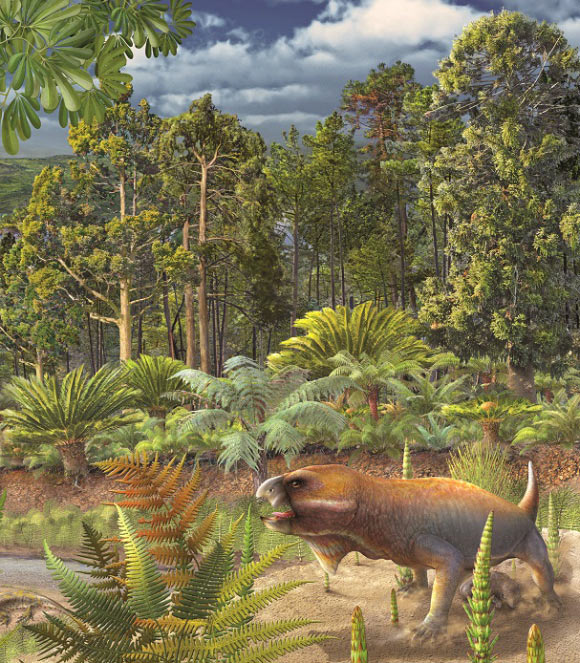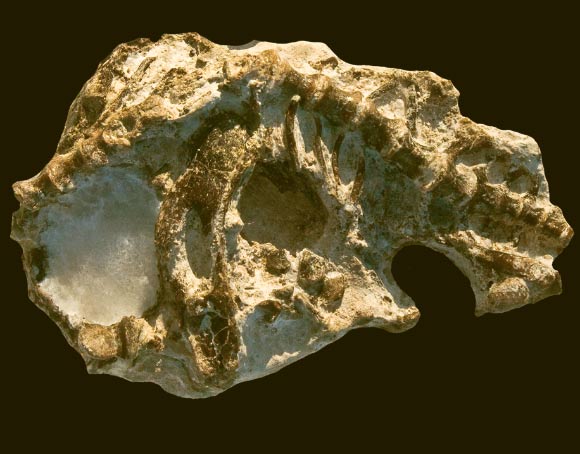Paleontologists have discovered a new genus and species of dicynodont that lived in what is now modern Mozambique during the Late Permian period, about 256 million years ago.

Niassodon mfumukasi. Image credit: Fernando Correia, dbio / UAveiro.
The prehistoric animal has been named Niassodon mfumukasi, which means the ‘Queen of Lake Niassa’ in local languages Chiyao and Nyanja.
“The name is a tribute to the Yao matriarchal society, to the women of Mozambique and to the beauty of Lake Niassa,” explained Dr Fabian Wilde of Helmholtz-Zentrum Geesthacht with colleagues.
Niassodon mfumukasi is a dicynodont – an herbivorous mammal-like reptile (Synapsida). Its skull and much of the skeleton were unearthed during fieldwork in the remote province of Niassa, Mozambique, in 2009.
By using micro-computed tomography, Dr Wilde and his co-authors digitally reconstructed the bones of the ancient creature and created a virtual model of its brain. The model reveals new information on the brain anatomy of early synapsids, which is important for understanding the evolution of many features of the mammalian brain.

Fossil of Niassodon mfumukasi, ventral view. Image credit: Castanhinha R et al.
The paleontologists have described the anatomy of Niassodon in a paper published in the open-access journal PLoS ONE.
The Niassodon fossil can now be visited at the Lourinhã Museum, Portugal, but soon will return to Mozambique, where it will become part of the collections of the National Museum of Geology.
______
Castanhinha R et al. 2013. Bringing Dicynodonts Back to Life: Paleobiology and Anatomy of a New Emydopoid Genus from the Upper Permian of Mozambique. PLoS ONE 8 (12): e80974; doi: 10.1371/journal.pone.0080974







